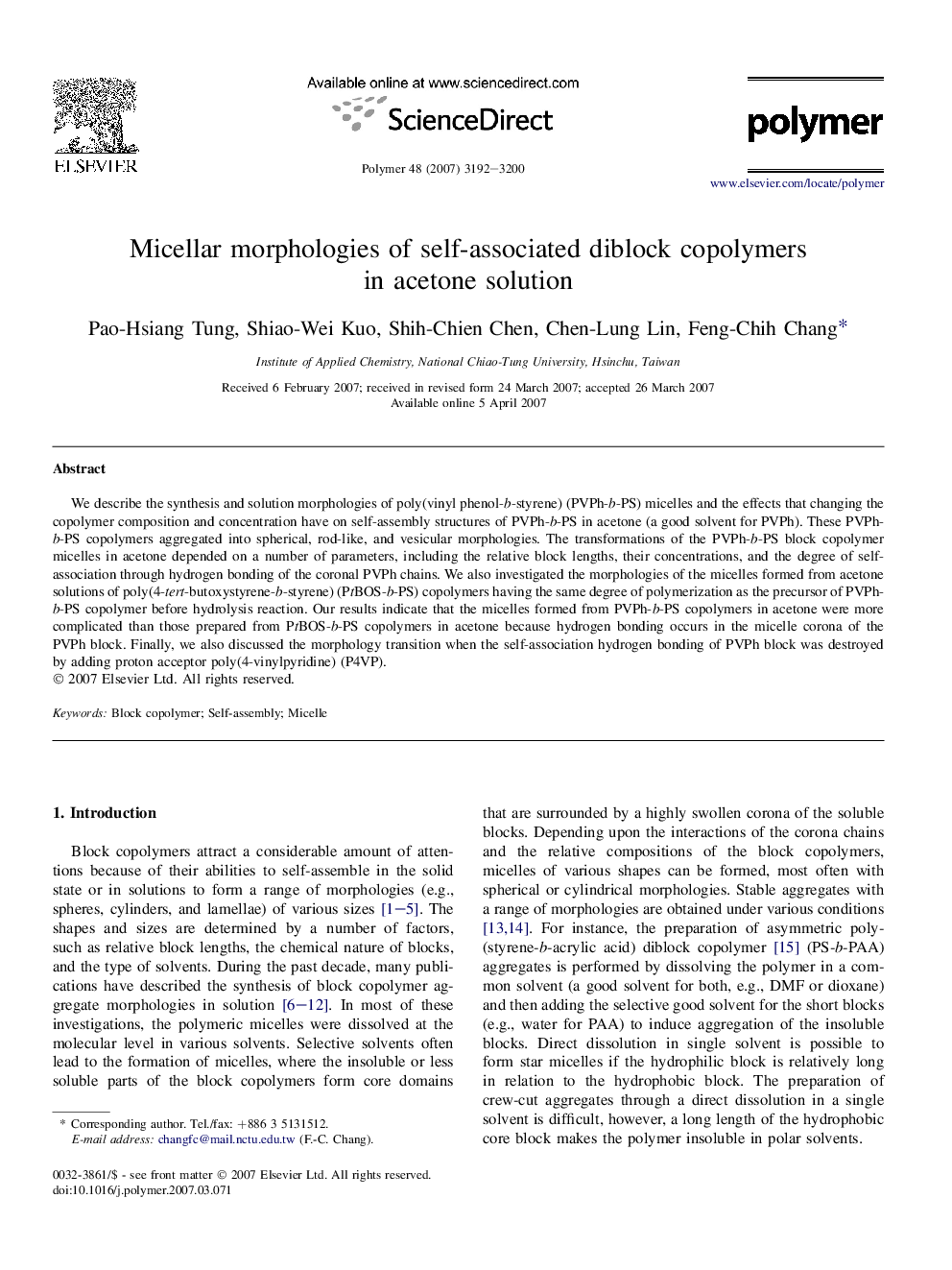| Article ID | Journal | Published Year | Pages | File Type |
|---|---|---|---|---|
| 5187984 | Polymer | 2007 | 9 Pages |
Abstract
We describe the synthesis and solution morphologies of poly(vinyl phenol-b-styrene) (PVPh-b-PS) micelles and the effects that changing the copolymer composition and concentration have on self-assembly structures of PVPh-b-PS in acetone (a good solvent for PVPh). These PVPh-b-PS copolymers aggregated into spherical, rod-like, and vesicular morphologies. The transformations of the PVPh-b-PS block copolymer micelles in acetone depended on a number of parameters, including the relative block lengths, their concentrations, and the degree of self-association through hydrogen bonding of the coronal PVPh chains. We also investigated the morphologies of the micelles formed from acetone solutions of poly(4-tert-butoxystyrene-b-styrene) (PtBOS-b-PS) copolymers having the same degree of polymerization as the precursor of PVPh-b-PS copolymer before hydrolysis reaction. Our results indicate that the micelles formed from PVPh-b-PS copolymers in acetone were more complicated than those prepared from PtBOS-b-PS copolymers in acetone because hydrogen bonding occurs in the micelle corona of the PVPh block. Finally, we also discussed the morphology transition when the self-association hydrogen bonding of PVPh block was destroyed by adding proton acceptor poly(4-vinylpyridine) (P4VP).
Keywords
Related Topics
Physical Sciences and Engineering
Chemistry
Organic Chemistry
Authors
Pao-Hsiang Tung, Shiao-Wei Kuo, Shih-Chien Chen, Chen-Lung Lin, Feng-Chih Chang,
